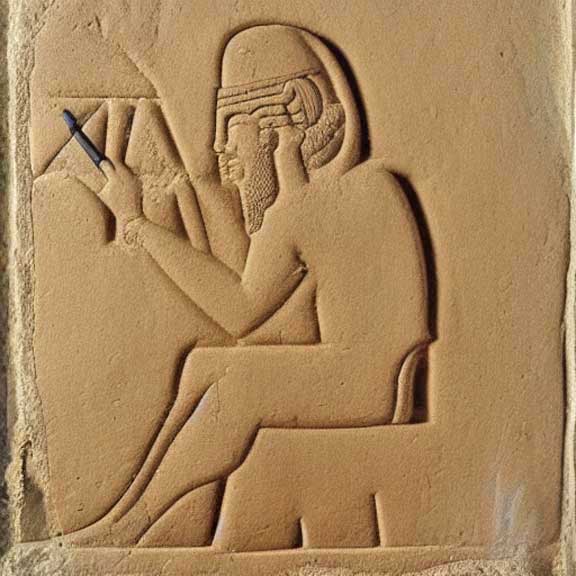Art And Technology
Of The Mayan Empire

The ancient Mesoamerican people built a great civilization. From around AD 250 to 900, the Maya thrived as never before or since. But it was not an easy feat. The Maya had to deal with regular natural disasters and persistent disease pandemics. Much about their society remains a mystery today. However, through research and study of archaeological findings, we have gained substantial knowledge of how the Maya operated as a culture. Understanding the basics of Maya culture enables us to understand their beliefs, practices, rituals, and traditions so that we can better appreciate what they left behind.
What is Mesoamerican Culture?
Mesoamerican culture was a set of beliefs, values, and customs shared by the indigenous people of the Pre-Columbian New World. It was particularly strong in the Classic period (AD 250-900) of the Maya civilization.
The ancient Mesoamericans were skilled farmers and architects. They also built complex and highly civilized societies. Their culture had a number of interesting aspects:-
- They had a distinctive architectural style, including the pyramid-temple, the ball court, and the log canoe.
- They had a sophisticated and highly developed system of writing. This included both hieroglyphic writing and the use of the number system.
- They had a sophisticated calendar system of astronomical and ritual cycles.
- They had an organized religion that was based on a pantheon of gods and goddesses. - They had an organized system of social classes that included the priests, the nobles, the traders, and the farmers and peasants.
Maya Beliefs and Practices
The ancient Maya had a complex set of beliefs and practices. Many of them are still not fully understood, but there is enough information to get a general idea. They had, for instance, a polytheistic religion, in which they worshipped a range of gods and goddesses.
The Maya believed that the world was inhabited by various supernatural beings with both positive and negative powers. Among the most important and powerful of these were the gods and goddesses who controlled the forces of nature. The gods and goddesses were believed to live in specific places, often on the tops of mountains and they were often represented in the form of idols, paintings, and sculptures. Some of these idols were massive in size, being several meters long.
The Maya had distince ways of worshipping their deities; some of these were public and social, while others were private and personal.
Maya Rituals and Traditions
The ancient Maya practiced a number of rituals and traditions. Among the most widely practiced was bloodletting. Rulers, for instance, would often pierce their bodies with knives to draw blood, which they sacrificed to their gods.
The Maya also practiced a number of burials and other funerary ceremonies. Some of their burials have been found to have had bowls of food near them. Other ceremonies practiced by the Maya included ball games, processions, and festivals.
The Maya also had a complex and highly developed system of justice and they had a distinctive calendar system that included both astronomical rhythms and ritual cycles. The Maya calendar was more complex than those of other ancient cultures, such as the Aztecs. The Maya calendar had 360 days rather than 365 days and was based on a system of 20-day cycles. Different days had different meanings, and the Maya used the calendar to help them with many different activities, such as planting and harvesting crops, planning wars, and scheduling social and religious events.
In the Classic Period, the Maya were also able to predict eclipses. They also developed a sophisticated system for predicting the motion of the stars.
Maya Society: Hierarchy and Economy
The ancient Maya had a complex social system based on the idea of hierarchy. They had a rigid social hierarchy consisting of kings, nobles, and common people. This social hierarchy was linked to a system of landownership that was based on the concept of land stewardship.
The king of the Maya society was considered a divine ruler. He was believed to have been chosen by the gods to lead his people. The king was also the head of a noble class that controlled the land and its produce.
The nobles and kings had a social and economic monopoly over the rest of the people. They had the right to extract taxes, demand labour services, and use corporal punishment. Some of the common people were landless peasants who were tied to the land and had no choice but to work for the nobles. The rest of the common people were artisans and craftsmen who carried out various specialized occupations.
The Great Collapse of the 3rd Century AD
Around AD 250, the Maya civilization flourished and built great cities. They excelled in architecture, astronomy, mathematics, and the arts. At its peak, the Maya population is estimated to have been around 2.5 million people. However, by the 9th or 10th century, much of the Maya civilization had deserted the cities and returned to a more rural way of life. The social and political fabric of Maya culture had disintegrated.
The cause of this collapse is still being debated by archaeologists and anthropologists. Some scholars point to environmental degradation, drought, and climate change as a reason for the decline of the Maya. Others theorize that the fall of the Maya was due to epidemic diseases such as the Black Death and measles brought over by European explorers.
Conclusion
The Maya had a fascinating, complex, and rich culture. While much remains to be discovered, scholars have gained considerable insight into their society, beliefs, and practices. The Maya were a deeply religious, rich, and cultivated people.